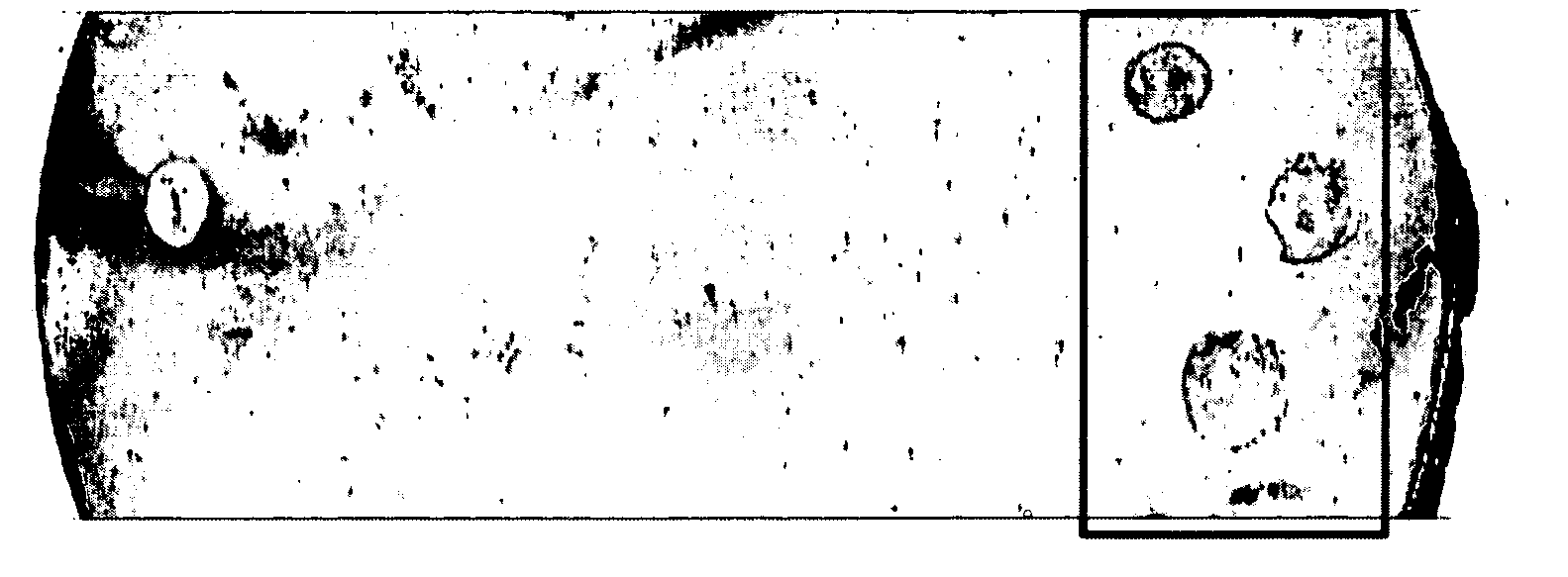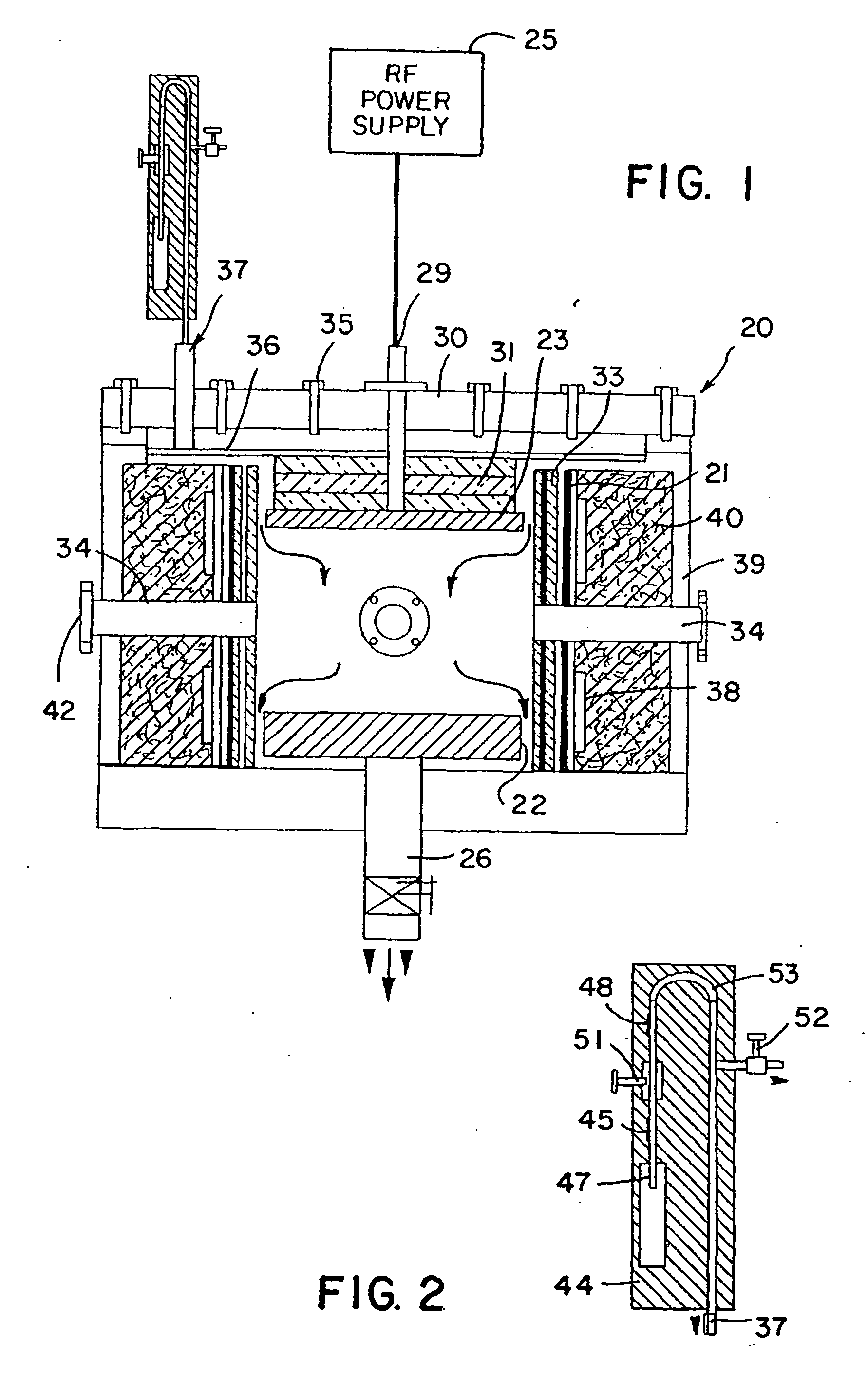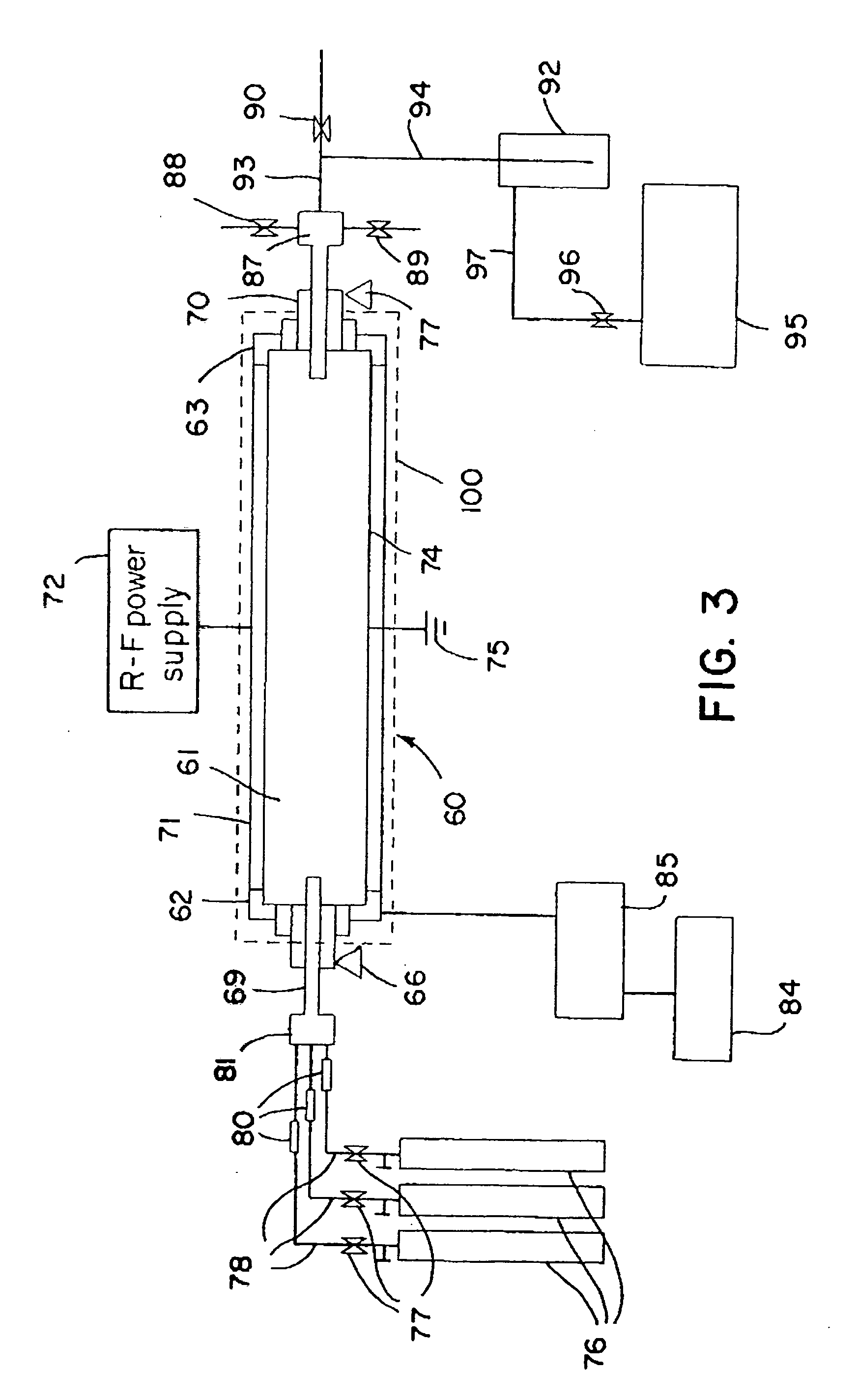Plasma-enhanced functionalization of carbon-containing substrates
- Summary
- Abstract
- Description
- Claims
- Application Information
AI Technical Summary
Benefits of technology
Problems solved by technology
Method used
Image
Examples
example 1
Attachment of DNA to a Diamond-like Carbon Film
[0064] Polycarbonate slides were obtained from McMaster-Carr (Atlanta, Ga.). A diamond-like carbon film was formed on a polycarbonate slide according to the procedure described in U.S. patent application Ser. No. 10 / 686,790, the entire disclosure of which is incorporated herein by reference. Briefly, the polycarbonate slide was placed in a cylindrical, capacitively coupled, RF-plasma reactor made of stainless steel and equipped with a 40 kHz power supply. The plasma chamber was pumped down to a base pressure and an SF6 plasma source gas was introduced into the chamber. A plasma of SFx (x<6) ion species was ignited in the chamber at about 200 Watts RF power and 200 mTorr pressure and sustained for at least about 5 minutes to provide a diamond-like carbon film on the surface of the substrate.
[0065] The diamond-like carbon film was then subjected to an argon plasma-treatment in the RF-plasma reactor under the following experimental condi...
example 2
Attachment of DNA to a Polycarbonate Substrate
[0070] A polycarbonate slide, obtained from McMaster-Carr (Atlanta, Ga.), was subjected to a plasma treatment in the RF-plasma reactor under the following experimental conditions: Pressure of argon: 200 mTorr; RF-power dissipated to the electrodes: 200 W; Exposure time: 3 minutes. After the plasma treatment, the RF plasma chamber was pumped down to remove leftover reactive species.
[0071] Without breaking vacuum, a gas of ethylenediamine was introduced into the chamber and allowed to react with the plasma-treated surface. Covalent attachment of the ethylenediamine spacer molecules was performed by introducing the ethylenediamine vapors over the plasma-treated polycarbonate surface under vacuum (pressure of ethylenediamine: 200-250 mTorr; reaction time: 30 minutes). The chamber was then pumped down again and the surfaces were exposed to a vapor of glutaric dialdehyde spacer molecules (pressure of glutaric dialdehyde: 200-250 mTorr; react...
example 3
Attachment of DNA to Carbon Nanotubes
[0075] A suspension of single-walled carbon nanotubes in toluene was obtained from Carbon Nanotechnologies, Inc. Drops of a carbon nanotube-containing solution, were placed on two standard glass slides. One drop was placed at each corner of the two glass slides.
[0076] The carbon nanotubes were subjected to an argon plasma-treatment in the RF-plasma reactor under the following experimental conditions: Pressure of argon: 200 mTorr; RF-power dissipated to the electrodes: 200 W; Exposure time: 3 minutes. After the plasma treatment, the RF plasma chamber was pumped down to remove leftover reactive species.
[0077] Without breaking vacuum, a gas of ethylenediamine was introduced into the chamber and allowed to react with the plasma-treated nanotubes. Covalent attachment of the ethylenediamine spacer molecules was performed by introducing the ethylenediamine vapors over the plasma-treated nanotubes under vacuum (pressure of ethylenediamine: 200-250 mTo...
PUM
| Property | Measurement | Unit |
|---|---|---|
| Temperature | aaaaa | aaaaa |
| Length | aaaaa | aaaaa |
| Length | aaaaa | aaaaa |
Abstract
Description
Claims
Application Information
 Login to View More
Login to View More - R&D
- Intellectual Property
- Life Sciences
- Materials
- Tech Scout
- Unparalleled Data Quality
- Higher Quality Content
- 60% Fewer Hallucinations
Browse by: Latest US Patents, China's latest patents, Technical Efficacy Thesaurus, Application Domain, Technology Topic, Popular Technical Reports.
© 2025 PatSnap. All rights reserved.Legal|Privacy policy|Modern Slavery Act Transparency Statement|Sitemap|About US| Contact US: help@patsnap.com



